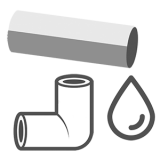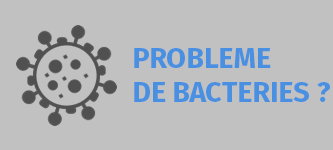| » » » |
Que recherchez-vous ?
Which water purification stations for your independent home?
Water purification systems are essential to ensure access to a source of reliable and quality drinking water, especially in areas where piped water is not available or is not safe to drink. . They are used to eliminate suspended solids, turbidity, pathogenic micro-organisms, chlorine, odors and aromas, organic compounds such as pesticides and reduce contaminants (Fe, Mn, etc.) and treat the water from medium to low quality, usually surface water from rivers, lakes and reservoirs, but also groundwater from a well or borehole. They are installed in cases where cartridge filters cannot guarantee clean and healthy water all year round.
What are the different water purification systems that can be used to become self-sufficient in drinking water?
Whether you own a houseboat, a house near a river or are simply looking for an autonomous drinking water solution, we give you all the advice you need to make an informed decision.
Sand or flint pre-filtration system
The sand or flint pre-filtration system is one of the first steps in the water purification process. It uses a bed of sand or flint to filter solid particles and impurities from the water. This system is effective in removing large particles, sediments and suspended solids. It can also help reduce water turbidity. However, it cannot remove chemical contaminants or pathogenic microorganisms.
Treatment system against limestone, nitrates or lead
Some water purification systems are designed to deal with specific problems such as limescale, nitrates or lead. These contaminants can be present in drinking water and can have adverse health effects. Targeted treatment systems use technologies such as ion exchange, adsorption and filtration to remove these specific contaminants and make the water safe to drink.
Contact iron removal system
Contact iron removal is a process used to remove dissolved iron from water. Iron can make water unsuitable for drinking due to its color, taste and odor. This system uses a special filter medium which reacts with the iron and precipitates it in the form of solid particles. These particles can then be easily removed by filtration or decantation.
Aid to filtration by pH corrector
The pH of water can have a significant impact on its quality and potability. Some water purification systems incorporate a pH corrector to adjust the pH of the water to an optimal level. This can improve the efficiency of other water treatment processes and ensure drinking water is safe and pleasant to drink.
Filter with bottled activated carbon with manual or automatic cleaning system
Activated carbon filters are commonly used in water purification systems to remove chemical contaminants, odors and bad tastes. They work by adsorbing contaminants onto the surface of the activated carbon. Some activated carbon filters are available in a bottle version with a manual or automatic cleaning system, making them convenient to use for travel or emergency situations.
Hollow fiber UF filter
Hollow fiber membrane filters are effective in removing bacteria, protozoa and suspended particles from water. These filters use microporous membranes that allow the passage of water while retaining contaminants. Hollow fiber filters are durable and can be cleaned and reused, making them suitable for long-term applications.
Chlorination system
Chlorination is one of the most commonly used means of disinfecting drinking water. Chlorine is added to water to kill pathogenic microorganisms such as bacteria and viruses. This process is efficient, economical and relatively easy to implement. However, it is important to dose the chlorine correctly to avoid excessive levels which could be harmful to health.
UV sterilization disinfection system
UV sterilization is a water disinfection method that uses ultraviolet light to kill microorganisms in water. UV sterilization disinfection systems are often used in combination with other water treatment methods to ensure maximum effectiveness. They are chemical free and do not alter the taste, smell or color of the water.
Reverse osmosis system for the treatment of conductivity due to sea salt
Reverse osmosis systems are used to remove dissolved salts, minerals and other contaminants from water. These systems work by forcing water through a semi-permeable membrane that retains contaminants while pure water passes through. Reverse osmosis systems are particularly effective for treating seawater, where the high conductivity due to salt can render the water undrinkable.
Drinking water system: Can we be autonomous in drinking water?
Water purification is an essential process to ensure a safe and reliable drinking water supply, especially in situations where access to piped water is limited. The drinking water systems described above can be used individually or in combination to obtain quality drinking water. However, it is important to note that even with a potabilization system in place, it is still recommended to regularly test the water to ensure its quality and safety.
Safely purify your river or lake water, and enjoy a reliable, quality source of drinking water at all times.
Installing a drinking water station on a houseboat or in a house near a river or stream can provide a convenient, self-contained drinking water solution. These stations use advanced water purification systems to treat the raw water and make it fit for consumption. They can retain a wide range of chemicals, hydrocarbons and pathogens, providing pure and healthy water. By opting for such a solution, you can be sure of having a reliable source of quality drinking water at all times.
Water purification is a complex process that requires the use of different treatment systems to remove contaminants and make the water safe to drink. Pre-filtration, treatment, filtration and disinfection systems are all important in ensuring the safety and quality of drinking water. By choosing the appropriate system according to your specific needs, you can become self-sufficient in drinking water and enjoy a reliable and quality source. Remember to always follow the manufacturer's recommendations and regularly test the water to ensure its potability.


























































